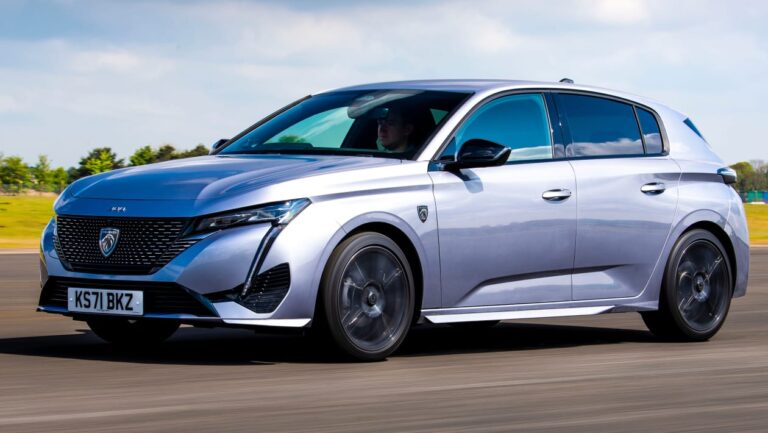Buyers looking for an eye-catching family hatchback that offers a little more character and (dare we say it) Gallic flair than other mainstream rivals, could find the Peugeot 308 an interesting option. The French family car is bestowed with an air of quality that means it will have other premium hatches from the likes of Audi and BMW well in its sights.
But the 308 isn’t quite the complete package; its cramped rear seats won’t win favour from passengers, while its insipid handling and imprecise automatic gearbox will disappoint keener drivers. Improved onboard technology and decent levels of refinement are plus points that help to make the 308 a desirable choice, but other, admittedly less handsome, hatchbacks offer better value for money.
About the Peugeot 308
Peugeot knows a thing or two about making a good-looking hatchback. From the iconic 205 and 306 of the 80s and 90s, to the sharp styling of the current 208 supermini, the French car maker has often prioritised cars that draw in buyers with a real sense of desirability.
Peugeot sought out famed design firm and coachbuilder Pininfarina to come up with the blueprint for the 306, along with the sleek 406 Coupe, while the double-bubble roof of the sporty RCZ coupe was inspired by another Italian coachbuilding company, Zagato.
So, we’ve established Peugeot’s design credentials, and it’s clear from just a quick glance at the new 308’s dramatic, rakish look that the manufacturer wants buyers to sit up and take notice. Its distinctive style makes some rivals feel a bit ordinary and definitely helps the 308 stand out in a crowded hatchback market.
Competition is fierce, with mainstream perennials such as the Ford Focus, Honda Civic, Vauxhall Astra and SEAT Leon all vying for attention, while the Korean pair of the Kia Ceed and Hyundai i30 are worth equal consideration. More premium opponents come in the form of the Audi A3, BMW 1 Series and the Mercedes A-Class, but such is the 308’s push upmarket that it won’t be shying away from taking on this talented trio.
The front-wheel-drive 308 offers a range of petrol, diesel and plug-in hybrid (PHEV) powertrains; the 1.2-litre Puretech petrol unit produces 129bhp, as does the 1.5-litre BlueHDi diesel, while the PHEV model uses a 1.6-litre petrol engine alongside a 12.4kWh battery and single electric motor to deliver either 178bhp or 222bhp. An eight-speed automatic transmission is standard across the range.
Standard equipment is reasonably generous and includes 16-inch alloy wheels, automatic headlights and wipers, auto air-conditioning, rear parking sensors and Peugeot’s i-Cockpit twin-screen set-up that covers driver information and infotainment systems. However, we’d recommend upgrading to either the Allure or Allure Premium specification which sets off the 308’s overall look a little better than the entry-level Active Premium’s sparser appearance.
For buyers willing to spend a bit more, there’s the sporty GT model (the GT Premium model is no longer available), although you’ll need around £32,000 to secure a petrol version and nearer £40,000 for a plug-in hybrid version. The 308 SW estate model is also available, offering increased practicality and starting from around £28,000.
For an alternative review of the Peugeot 308, visit our sister site carbuyer.co.uk…


